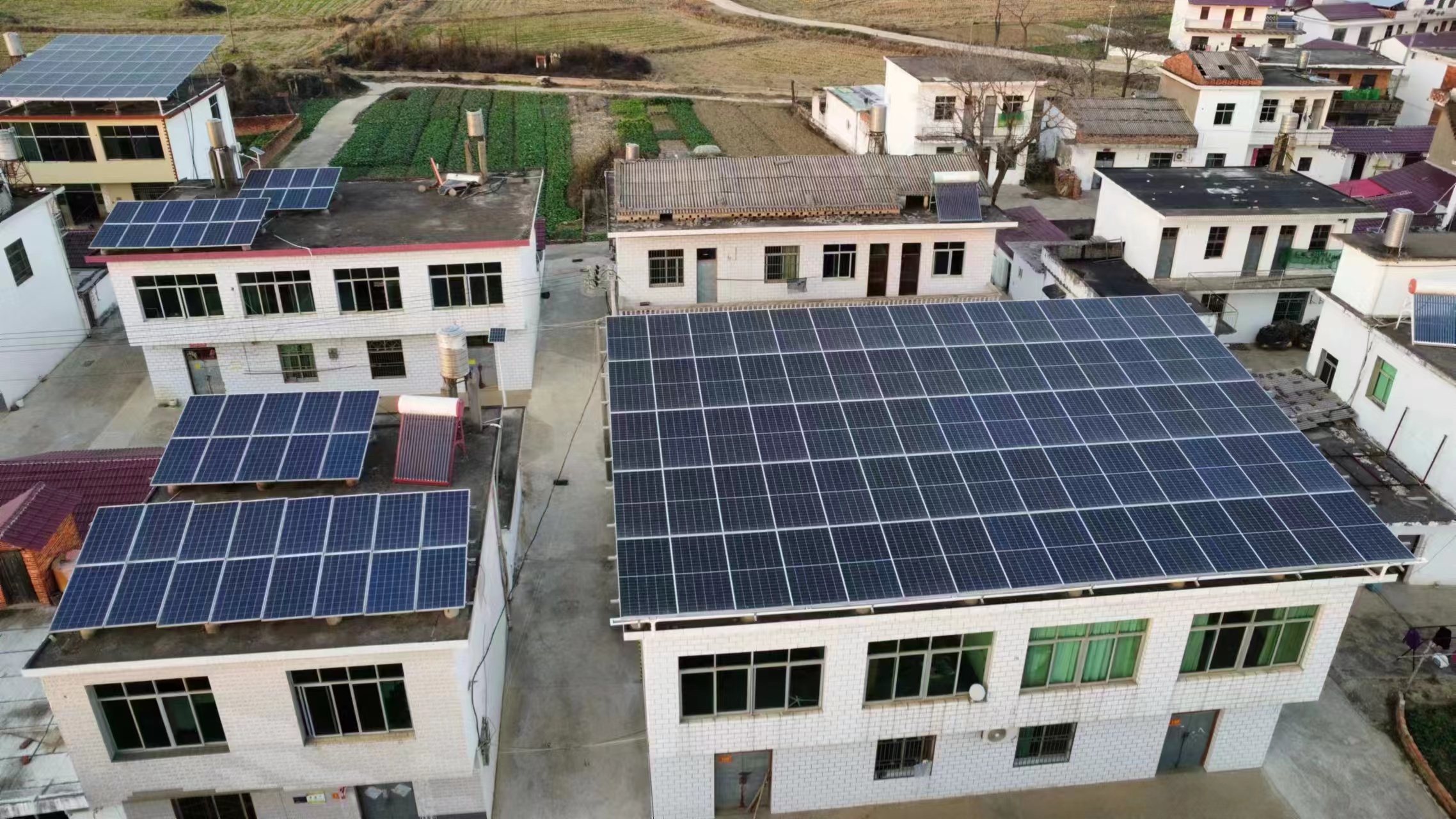Renting a roof into a photovoltaic power station, and villagers publish their own "sunshine accounts": what a good deal!
"The income from laying a photovoltaic panel is 20 yuan. There are a total of 79 panels on the roof of my house. The income is about 1600 yuan a year, which can last for 25 years." As soon as the reporter walked into Deng Shixing's home in Dongxi Village, Yongxiu County, Jiangxi Province, he hurriedly invited the reporter to climb onto the roof to visit, and couldn't help but "dry" his own "sunshine ledger."
In the context of "double carbon", carbon reduction in cities and industries is more common, but how to solidify and reduce carbon in rural areas to achieve low carbon and zero carbon is a new topic.
In developing photovoltaics, Jiangxi has the advantage of resource endowment. It is rich in light and heat resources and is at the middle and upper reaches of the country. Most of the roofs of local rural houses are flat-topped, which is suitable for laying household distributed photovoltaic panels. Jiangxi Longyuan New Energy Co., Ltd.hereinafter refer to as Jiangxi Longyuan) Innovatively proposed "green electricity to thousands of households", vigorously develop new energy according to local conditions, promote the popularization of new energy projects such as household distributed photovoltaics, provide clean and stable power supply to rural areas, help optimize and upgrade rural industrial structure, and Improve farmers 'income levels and explore a new path of "new energy projects + rural revitalization".

The picture shows a photo of photovoltaic laying on the roofs of local houses. Photo by Zhang Bing
Taking Yongxiu County as an example, 1500 rural households in the county have installed photovoltaic panels on their roofs.
Starting from 2022, Yongxiu County and Longyuan, Jiangxi Province have begun to guide villagers to lend their roofs to install solar photovoltaic panels. As the old village chief, Deng Shixing was the first to sign up. At first, some villagers were confused considering the need to provide ID cards, bank cards and other information, but Deng Shixing felt that this "sunshine account" was a good deal.
Subsequently, Jiangxi Longyuan began planning and design for one household. It is estimated that 79 photovoltaic panels can be laid on the roof of Deng Shixing's house. Facts also proved Deng Shixing's judgment. He has received two years of rent.
"Based on the existing foundation and reality of the village, we start from three aspects: green and sustainable energy, green livable living environment, and green and low-carbon production and lifestyle, and mainly calculate the two accounts of economy and ecology." Liu Bin, project manager of Jiangxi Longyuan Household Project, said,"Different from the previous form in which private enterprises allowed villagers to invest, we adopt a roof rental model. Villagers only need to provide idle space. The installation and maintenance of photovoltaic panels are invested by the company. Give villagers rent."
Where does the incoming electricity go? Liu Bin explained that each roof is equivalent to a small photovoltaic power station, and the power generation directly enters the national power grid, basically realizing that power generation cannot reach the village. According to statistics, Deng Shixing's family's cumulative power generation over the past two years has reached 36,000 kWh.
While talking, Deng Shixing pointed to the photovoltaic panel above his head and said,"This photovoltaic panel is really good. It can not only earn rent, but also insulate and waterproof the roof." The reporter saw on the roof that although Jiangxi had just had a heavy rain, the roof of Deng Shixing's house remained dry and there was no sign of rain.
"We have innovated the process by installing a zinc-magnesium-aluminum water guide tank at the splicing point of the photovoltaic modules. Through the water guide tank, it is merged into the water pipe, and then discharged through the roof's own drain to completely avoid rainwater dripping." Liu Bin said,"Photovoltaic projects rely on solar energy to generate electricity, and absorbing solar energy and converting it into electricity also plays a certain role in thermal insulation. After testing, the temperature of a room with photovoltaic modules installed on the roof is 3-5 degrees Celsius lower."
It is worth mentioning that Jiangxi Longyuan has also developed "Guangzhiyun" Mini programs to realize the full life cycle management of distributed projects. A complete set of household development processes, from signing cooperation agreements, processing grid connection procedures, to final electricity bill recovery and rent payment, can all be completed in Mini programs. This solves problems such as difficult management and small number of personnel, and can effectively improve the development efficiency of household projects.
It is estimated that for every 1 kWh of electricity generated by photovoltaic, 0.4 kilograms of standard coal can be saved and carbon dioxide emissions can be reduced by approximately 0.997 kilograms. Liu Bin told reporters that Yongxiu County's 50,000-kilowatt household photovoltaic project has an average annual power generation of 54.1656 million kWh, involving 1500 roofs. It can save about 16,300 tons of standard coal every year, reduce about 42,800 tons of carbon dioxide, and about 139 tons of sulfur dioxide., about 121 tons of nitrogen oxides, about 1683 tons of smoke and dust, and about 1601 tons of ash. It is a veritable low-carbon measure.







